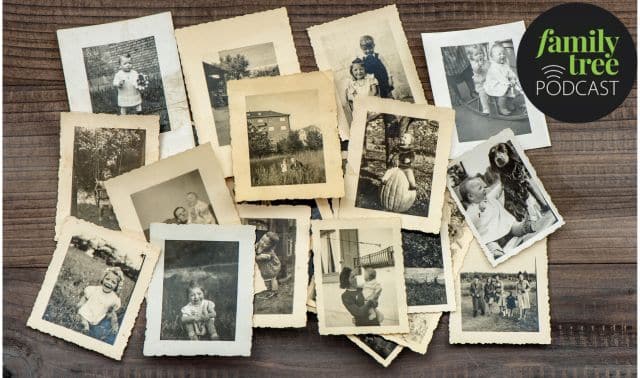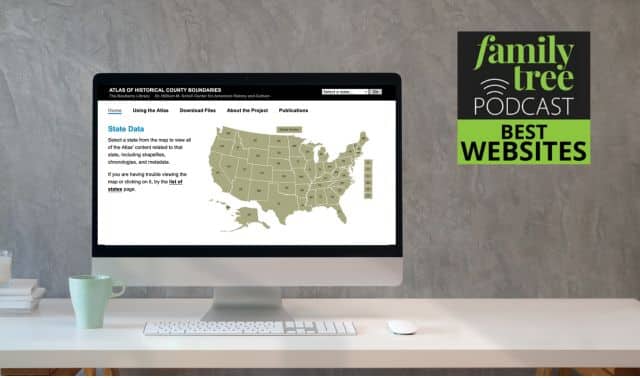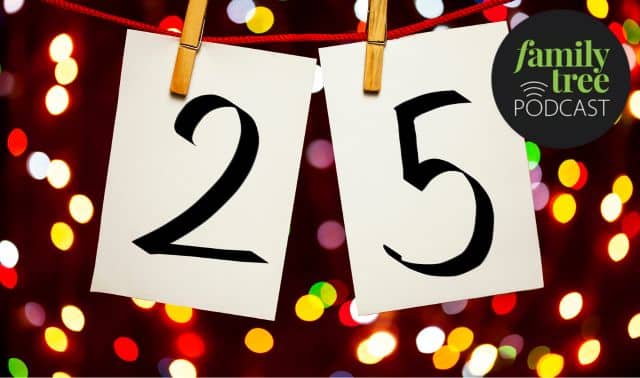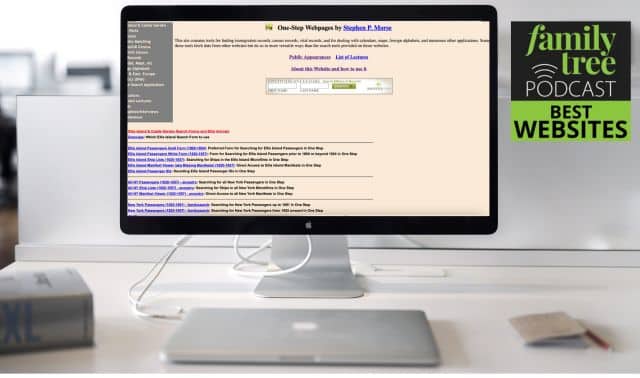Sign up for the Family Tree Newsletter! Plus, you’ll receive our 10 Essential Genealogy Research Forms PDF as a special thank you.
Get Your Free Genealogy Forms
"*" indicates required fields

In this month’s episode, learn how to break down those brick walls in your family tree with fantastic tips and tools from Lisa Louise Cooke and her guests.
Ep. 90: November 2015
In this episode:
News from the Blogosphere with Diane Haddad
Editor Diane Haddad provides a buffet of brick wall strategies from some of her recent Genealogy Insider blog articles.
ADVERTISEMENT
- The 1939 register from FindMyPast can help you with brick walls caused by modern record gaps due to privacy restrictions, or in this case, the absence of a census in England.
- Newspapers can be helpful in opening up new research avenues and filling in details.
- Under-recorded populations such as American Indians can be difficult to research. This post explains six clues to prompt your research into American Indian ancestry.
Top Tips: 10 Ways to Tell if You’ve Really Hit a Brick Wall
If you feel like you’ve hit a brick wall in your genealogy research, it may actually just be a detour—not the end of your research road. In his article Long Way Around (Dec. 2015 issue) author David Fryxell discusses 10 ways to tell if we are really at the end of the records road, or just at a detour.
101 Best Websites for Genealogy
Lisa’s guest Taneya Koonce shares her favorite websites:
- Afro-Louisiana History and Genealogy 1719-1820
- Digital Library on American Slavery
- Taneya’s Genealogy Blog
Family Tree University: Cluster and Collateral Research
Contributing Editor Sunny Morton joins Lisa to share tips from Family Tree University’s course, Cluster and Collateral Research 101.
ADVERTISEMENT
Cluster and Collateral Research 101 covers:
- How to get started with cluster and collateral research: who to look for, what constitutes a cluster or collateral relation
- When to use cluster and collateral approaches
- Which records are best for cluster and collateral research, including census, vital, church, newspapers, land transfers, wills. etc.
- How to determine the names and relationships between relatives
- How to organize and employ the information you extract from cluster and collateral research
- How to find clusters beyond neighbors and coworkers that hold info about your ancestor
- Research problems needed to extend the tree
- Explain a mystery or apparent contradiction in the record
- Identify how someone fits into the family
- Separate people of the same name
- Find a family that disappears
- Research before 1850 and immigrants
- Provide biographical clues and appreciation for their lives
- Personal understanding of how past generations have affected today
Sunny’s Example: Census Research. The U.S. federal census began requesting the relationship of each person to the head of household in 1880. This is extremely helpful, though occasionally can be misleading. Perhaps most commonly, it’s easy to assume the son of a male head of household is also the son of the current wife. Look for the age difference between each child and the wife. Look for significant age gaps between children. If you wonder, search for additional marriage records for the man. (Or jump to the 1900 census, if this family unit is still intact then, to see how many years they’d been in this current marriage and how many children the woman had borne.) Sometimes in the marital status column, you’ll see “M1” for first marriage and “M2” for second marriage, etc.
The Publisher’s Desk with Allison Dolan
Allison discusses the ebook 101 Brick Wall Busters: Solutions to Overcome Your Genealogical Challenges. This compilation of Family Tree Magazine experts’ answers to readers’ toughest questions offers solutions for beginning and veteran genealogists. You’ll learn strategies and discover new resources for tracing missing ancestors, finding the right records, researching in the old country and more. And you can use our exclusive Records Checklist and Brick Wall Worksheet to formulate your plan of attack.
Your Host: Lisa Louise Cooke

Listen to Lisa Louise Cooke’s Genealogy Gems and Genealogy: Family History Made Easy podcasts in iTunes and visit her website for great research ideas, podcast episodes and videos.
Have fun climbing your family tree!
ADVERTISEMENT




